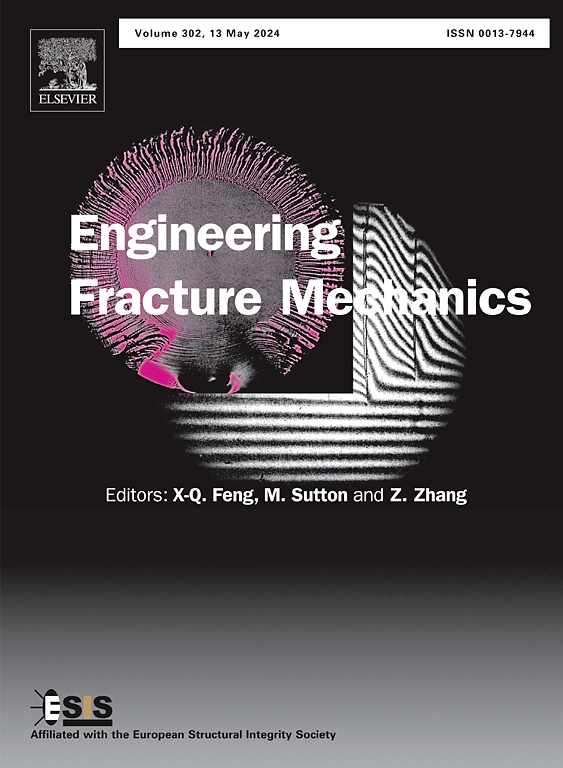Rotation control with dual actuators: A new device to extract mixed-mode traction–separation relations
IF 4.7
2区 工程技术
Q1 MECHANICS
引用次数: 0
Abstract
This paper addresses the extraction of traction-separation relations associated with the mixed-mode interactions at the interfaces between two materials in the context of cohesive zone modeling for large scale bridging during delamination. A direct approach that provides the normal and shear components of the traction-separation relation at any mode-mix is pursued using a novel rotation-controlled loading device. In the past, multiple laminated beam specimen geometries have been used to vary the mode-mix. However, when using the same specimen geometry is desirable, dual actuation provides the most general solution to mixed-mode loading path control. Based on our previous work, rotation control of laminated beams has been proposed as being optimal from crack growth stability and mode-mix control standpoints. This paper describes the implementation of this concept using laminated beams consisting of an epoxy sandwiched between aluminum strips. Digital image correlation was used to determine the location of the crack front and measure the normal and shear components of the crack tip separations. The specimen geometry allows the normal and shear components of the J-integral to be determined separately via measurements of the reactive torques. The normal and shear components of the traction–separation relations for five different mode-mixes are then presented. The results challenge some of the commonly accepted trends regarding the initiation and evolution of damage. The change of mode-mix as the damage evolves is also discussed as it relies heavily on the definition of the mode-mix.
双作动器旋转控制:一种提取混合模式牵引-分离关系的新装置
本文研究了在分层过程中大规模桥接的内聚区建模的背景下,两种材料之间的界面上与混合模式相互作用相关的牵引-分离关系的提取。采用一种新型旋转控制加载装置,直接提供了任何模式混合下牵引-分离关系的法向和剪切分量。在过去,多层叠层梁试样的几何形状已被用来改变模式混合。然而,当需要使用相同的试样几何形状时,双驱动提供了混合模式加载路径控制的最通用解决方案。基于我们之前的工作,从裂缝扩展稳定性和模态混合控制的角度提出了层合梁的旋转控制是最优的。本文描述了使用夹在铝带之间的环氧树脂层压梁实现这一概念。利用数字图像相关技术确定裂纹前沿位置,测量裂纹尖端分离的法向分量和剪切分量。试样的几何形状允许j积分的法向和剪切分量分别通过测量反作用力来确定。然后给出了五种不同模式混合料牵引分离关系的法向分量和剪切分量。结果挑战了一些普遍接受的趋势关于损伤的开始和演变。由于模态混合在很大程度上依赖于模态混合的定义,因此本文还讨论了模态混合随损伤演变的变化。
本文章由计算机程序翻译,如有差异,请以英文原文为准。
求助全文
约1分钟内获得全文
求助全文
来源期刊
CiteScore
8.70
自引率
13.00%
发文量
606
审稿时长
74 days
期刊介绍:
EFM covers a broad range of topics in fracture mechanics to be of interest and use to both researchers and practitioners. Contributions are welcome which address the fracture behavior of conventional engineering material systems as well as newly emerging material systems. Contributions on developments in the areas of mechanics and materials science strongly related to fracture mechanics are also welcome. Papers on fatigue are welcome if they treat the fatigue process using the methods of fracture mechanics.

 求助内容:
求助内容: 应助结果提醒方式:
应助结果提醒方式:


